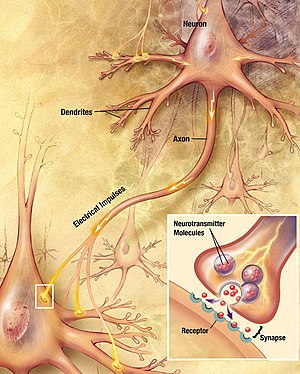Neurotransmitters activate their receptors which influence ion channels that directly affect excitation or inhibition of the postsynaptic cell. These mechanisms operate within milliseconds.
Neuromodulators activate their receptors which bring about changes in metabolic processes in neurons, often via G protein coupled to second-messenger systems. Such changes, which can occur over minutes, hours, or even days, include alterations in enzyme activity or, through influences on DNA transcription, in protein synthesis.
Thus, neurotransmitters are involved in rapid communication, whereas neuromodulators tend to be associated with slower events such as learning, development, motivational states, and some types of sensory or motor activities.
Classes of some chemicals known or presumed to be neurotransmitters or neuromodulators:
1. Acetylcholine (ACh)
2. Biogenic amines
- Catecholamines
- Dopamine
- Norepinephrine
- Epinephrine
- Serotonin
- Histamine
3. Amino acids
- Excitatory amino acids
- Inhibitorry amino acids
4. Neuropeptides
5. Gases
6. Purines














